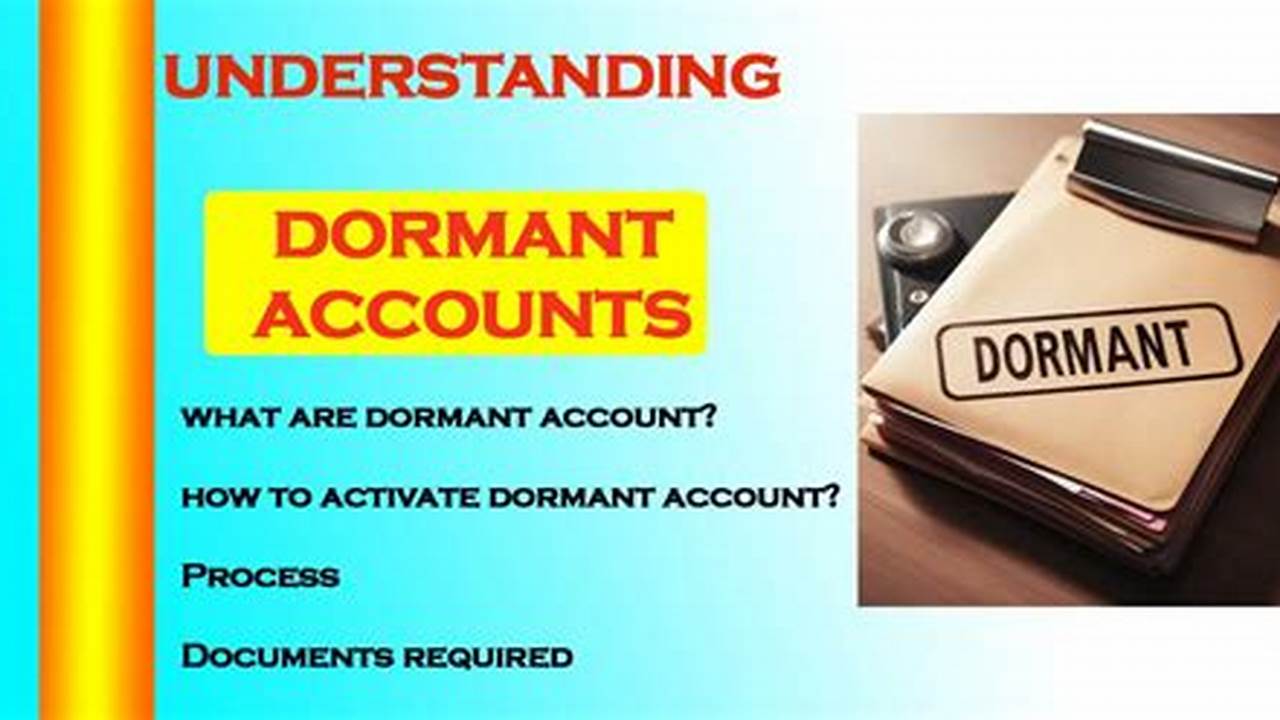Inactive bank accounts, often referred to as dormant accounts, are subject to specific rules and regulations that vary depending on the jurisdiction and financial institution. Comprehending these guidelines is crucial for account holders to avoid potential fees, loss of access, or even account closure. This article provides a comprehensive overview of the key aspects related to inactive bank accounts.
Importance of Knowing the Rules
Awareness of dormancy regulations allows account holders to maintain control over their finances and avoid unexpected consequences.
Typical Dormancy Period
The duration after which an account becomes dormant varies, but it commonly ranges from one to five years of inactivity.
Notification Procedures
Banks typically attempt to notify customers before an account becomes dormant, often through mail or email.
Fees and Charges
Dormant accounts may incur fees, including service charges or inactivity fees, which can deplete the account balance.
Reactivation Process
Reactivating a dormant account typically involves providing identification and potentially updating contact information.
Unclaimed Funds
In some cases, long-dormant accounts may be turned over to the state as unclaimed property.
Reporting Requirements
Financial institutions are often required to report dormant accounts to regulatory bodies.
Impact on Credit Score
While a dormant account itself does not directly impact credit scores, associated fees or negative balances can affect creditworthiness.
Tips for Avoiding Account Dormancy
Regular Transactions: Performing even small transactions, such as deposits or withdrawals, can prevent an account from becoming dormant.
Online Access: Regularly logging into online banking, even without conducting transactions, can sometimes suffice to maintain account activity.
Communication with the Bank: If anticipating a period of inactivity, contacting the bank to discuss options can help avoid dormancy issues.
Automatic Transfers: Setting up automatic transfers, even for small amounts, between accounts can prevent dormancy.
Frequently Asked Questions
What happens to the interest earned on a dormant account?
Interest may continue to accrue on a dormant account, depending on the bank’s policies. However, access to the interest might be restricted until the account is reactivated.
Can a dormant account be closed by the bank?
Yes, banks can eventually close long-dormant accounts after following specific procedures and regulations.
How can I locate a dormant account I may have forgotten about?
Resources such as the National Association of Unclaimed Property Administrators (NAUPA) can assist in locating potentially forgotten or lost accounts.
What documentation is typically required to reactivate a dormant account?
Commonly required documentation includes government-issued identification, proof of address, and potentially the original account opening documents.
Will I lose my money if my account becomes dormant?
Not immediately, but prolonged dormancy can lead to the transfer of funds to the state as unclaimed property. It’s crucial to reactivate the account or claim the funds to avoid this.
Are joint accounts subject to the same dormancy rules?
Yes, joint accounts are also subject to dormancy rules. Typically, activity by any of the account holders prevents dormancy.
Understanding the rules and regulations surrounding dormant bank accounts is essential for maintaining financial well-being. By staying informed and proactive, account holders can avoid potential complications and retain control over their assets.



